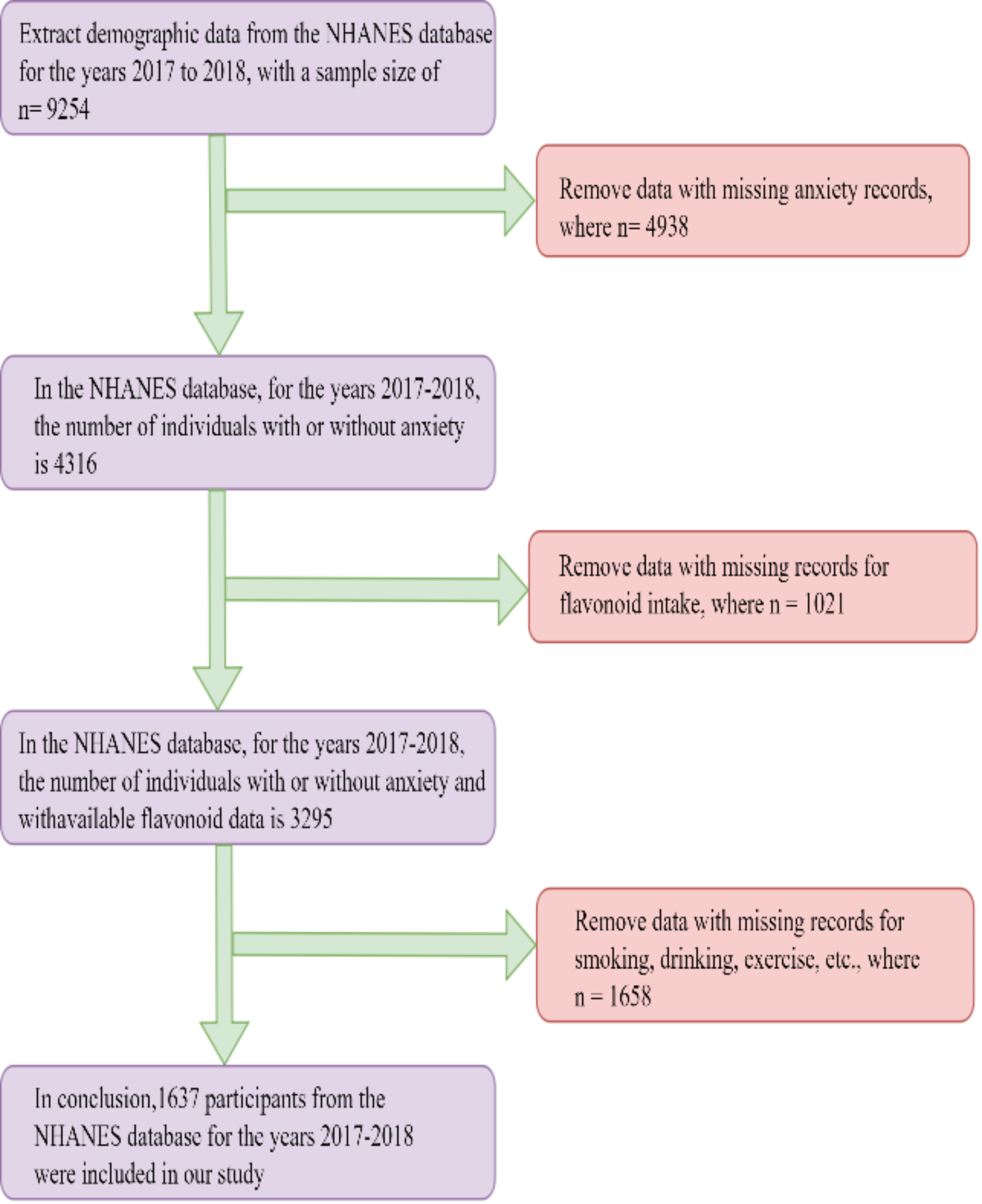A recent study published in BMC Public Health investigated the relationship between dietary flavonoid intake and anxiety, using data from the National Health and Nutrition Examination Survey (NHANES) from 2017 to 2018. Anxiety disorders are among the most common mental health conditions, affecting approximately 1 in 14 individuals. They are characterized by excessive fear, tension, avoidance behaviors, and heightened threat perception.
Flavonoids, which are bioactive compounds found in fruits, vegetables, and tea, have antioxidant, anti-inflammatory, and neuroprotective properties. However, prior research on the link between flavonoid consumption and anxiety risk has been limited.
The study included data from 1,637 participants, each of whom reported their flavonoid intake through 24-hour dietary recalls. Anxiety levels were assessed using a standardized questionnaire. Researchers used weighted logistic regression analysis to determine the relationship between flavonoid intake and anxiety risk, while also conducting subgroup analyses to understand how demographic factors influenced these associations.
Key findings highlighted that individuals with anxiety were generally older (average age of 47.12 years compared to 42.81 years for non-anxious participants). Additionally, the anxious group reported higher poverty-income ratios and body mass indexes (BMI), suggesting that socio-economic factors and weight may correlate with anxiety levels.
Gender differences were also notable, with 56.11% of anxious participants being female. This aligns with existing literature indicating that women may be more susceptible to anxiety disorders due to various biological and environmental factors.
Importantly, the study identified significant differences in flavonoid intake between anxious and non-anxious groups. Those with anxiety consumed higher levels of genistein and quercetin, along with total flavanones, total flavones, and overall flavonoids. For instance, the average intake of genistein was statistically linked to reduced anxiety risk, showing an odds ratio (OR) of 0.55 in the logistic regression analysis.
Further analysis indicated that naringenin, found in citrus fruits, was associated with a decreased risk of anxiety across multiple models, with an OR of 0.70. This compound has been noted for its neuroprotective and anti-inflammatory effects, which may help mitigate anxiety symptoms.
Subgroup analyses revealed that certain demographics experienced more pronounced benefits from flavonoid intake. For instance, theaflavin-3-gallate intake was linked to lower anxiety risks in individuals with a General Educational Development (GED) level education and those who were never smokers. Similarly, total flavones intake was associated with lower anxiety in married individuals and males.
The study also explored potential nonlinear relationships between flavonoid intake and anxiety risk using restricted cubic spline analysis. Results indicated that lower levels of total flavones and total flavanones intake were significantly associated with reduced anxiety, while higher intake levels did not show the same effect.
These findings suggest that increasing flavonoid intake, particularly through dietary sources such as fruits and vegetables, may help reduce anxiety symptoms. The study underscores the importance of considering dietary habits in mental health interventions and highlights potential areas for public health initiatives aimed at improving mental well-being through nutrition.
Overall, the research contributes to a growing body of evidence linking dietary choices to mental health outcomes, advocating for a diet rich in flavonoids as part of a holistic approach to managing anxiety.



